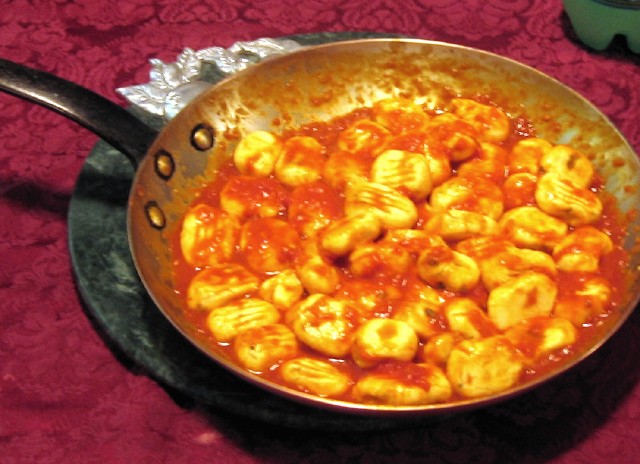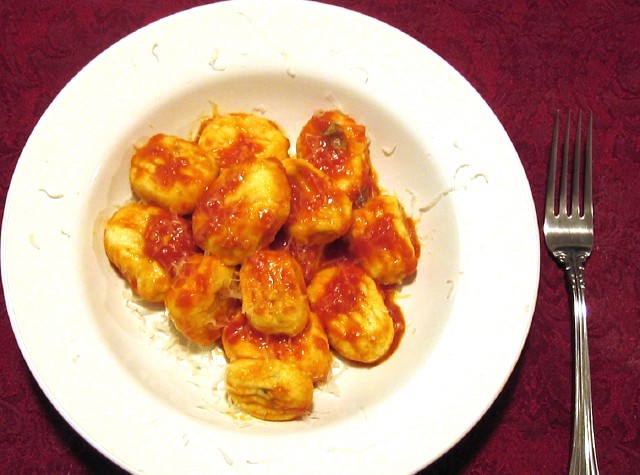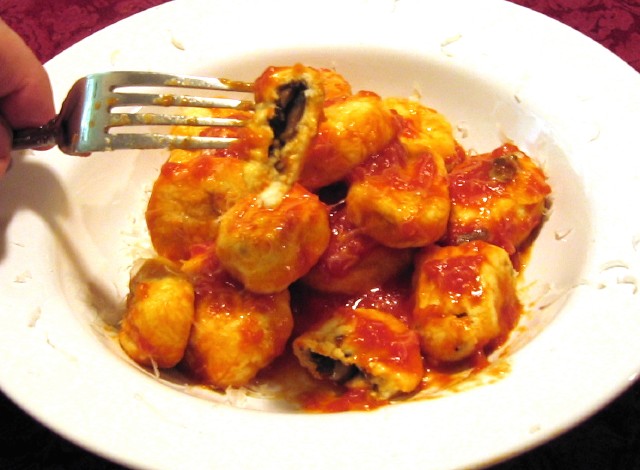-
Posts
11,151 -
Joined
Content Type
Profiles
Forums
Store
Help Articles
Posts posted by slkinsey
-
-
What hasn't been proven to my satisfaction is that raising ducks for foie gras, given the best modern methods and techniques such as are in use at Hudson Valley (the largest foie gras producer in the US), is inherently inhumane.
The EU investigatory group argued that because the ducks couldn't engage in "normal" activities (within the universe of livestock animals), it constituted poor welfare. But I thought their case was much weaker without battery cages (which is why they requested a ban on them). But even they, with their noticeable anti-foie-gras bias, had to acknowledge that the few experiments that have tried to measure stress in foie gras birds couldn't come up with any chemical indications that the birds are stressed during gavage.
Right. And the EU group still doesn't address the issue of inherrently inhumane. It is, of course, absolutely possible to raise ducks and geese for foie gras in a way that is inhumane. The question is whether it is impossible to raise ducks and geese for foie gras in a way that is not inhumane. As to the question of what is and is not a "normal activity" in the contect of domesticated livestock animals, I'm not convinced that gavage prevents this any more than finishing cows on grain in feedlots, cooping chickens in henhouses, keeping milk cows in stalls, etc.
As far as I know, by the way, Hudson Valley Foie Gras does not use battery cages.
-
Bruni, er. . . he doesn't really get it, does he? It's really too bad that Grimes didn't write this piece, because he's someone who really understands and appreciates a cocktail.
It seems odd to me that he felt constrained to write mostly about the food -- even going so far as to state that it was the food that allows Pegu Club to "earn it a place in this column." Would one write about a serious wine bar by spending 75% of the column writing about the bar snacks?
It's also interesting to see how much Bruni's perceptions differ from those of more experienced cocktail enthusiasts in these forums. We have been rejoicing in the Pegu Club's "Fitty - Fitty" Martini as a return to the true form of the drink, while he characterizes it as "awfully wet." And while members like Joerg Meyer have been calling the droppers of lemon, lime, simple and bitters "a really great invention" Bruni finds it a "cute additional gimmick."
Oh well...
Damn. Wish he hadn't done that.They may feel the same way. I don't think they'll ever allow Pegu Club to become a "three deep at the bar" kind of place.
-
Since this is a "stuffed pasta & gnocchi" cook off, I decided to combine both and make stuffed gnocchi. These are stuffed with a mixture of mushrooms and chicken livers cooked with a little tomato paste, smoked garlic, a touch of aged balsamic and a tiny grating of fresh nutmeg.

In the pan

On the plate

Looking inside
-
25 bucks?! For what size bottle? 750 ml bottles of Navan are going for something like $37-40. If the Montgomery County prices are for 750 ml, it's a remarkable bargain.
-
Before you commit to buying the Navan at Astor Wines, take a look at Warehouse around the corner on Broadway. They might not have Navan yet, but they often have substantially lower prices than Astor on certain items. For example, I've bought liter bottles of Cointreau at Warehouse for thirty bucks when other places are selling 750 ml for thirty-three.
-
One of my favorite stuffed cabbage stories is the time I was in the middle of cooking and realized that I had made enough for around 15 people instead of 3-4. What do to? I called Fat Guy for advice:
"Dude, what am I going to do? I've made way too much stuffed cabbage. I don't think I'll be able to fit this in the refrigerator!"
"Hold on a second." <Short pause with talking vaguely audible in the background> "We'll be over in ten minutes."
-
I think Robert's recipe is a little bit more than 3:1.
French Quarter
2.5 oz : brandy
.75 oz : Lillet blanc
Stir with ice and strain; garnish with a thin quarter wheel of lemon
I like the idea of rinsing the glass with Cointreau. Rinsing the glass -- something most people only think of doing with absinthe or an absinthe substitute -- is an underappreciated technique.
-
One of the great things about cognac drinks like the Sidecar is the luxuriousness of using good cognac. Courvoisier VS, Hennessy VS and Martell VS can usually be had for around $35 a liter, and are excellent in cocktails. For a brandy that has fine VSOP cognac characteristics but isn't too expensive, $35 will get you 750 ml of Germain-Robin Fine Alembic Brandy.
-
Slap of a hand?
That's nothing compared to Ramsay.
That's what I was thinking. Unless it came to fisticuffs (and perhaps not even then) I can't imagine a restaurant firing someone for slapping a runner's hand off the pass.
Now, can I imagine that Psaltis was a bad fit for French Laundry, and that this caused some mutual dissatisfaction? Absolutely. Can I imagine that Psaltis' departure from French Laundry was mutually desired? Certainly. Can I imagine that the slapping incident was the beginning of the end, and a moment that led to this parting of the ways? Sure. Can I imagine that Psaltis had motivations for leaving this incident out of his book? Yes. But I can also imagine that people at French Laundry, people fiercely loyal to Keller and who have heavily bought into his unassailable sacred cow mystique, would spin the incident and Psaltis' departure in the opposite direction, and that the rumor mill would really get going. These are both natural and indeed expected reactions.
I'm quite sure that if Keller feels that Psaltis' book -- and surely he is aware of it -- is unfair to him and French Laundry, and if he feels that it is connected to this incident, or that the story needs to be clarified with a description of this incident (or whatever the hell it is that Mssrs. Bourdan and Ruhlman are getting after), he is perfectly capable of saying, "Doug Psaltis slapped a runner at French Laundry and I shitcanned him" or "I thought Psaltis was a bad, cocaine-addicted chef, and when he punched a porter in the face it gave me the perfect excuse to fire him" or whatever. Having friends of the house and/or employees making insinuations and spreading rumors is sleazy, and beneath someone of Keller's stature. Frankly, I hope he wouldn't approve.
-
1:1 with a twist -- and a short dash of orange bitters, if you have any -- would be a good way to go. Sapphire is a good choice for this ratio, because it is 94 proof. Lower proof gins (say, Plymouth at 82.4 proof) may require a slightly greater amount of gin to make their presence felt.
While I'm offering advice. . . make the drink small (maybe 1.5 ounces of each), stir briefly with cracked ice, strain into a pre-chilled glass and pinch a lemon twist over the surface.
-
ludja, I think that is just a sad result of the misconception that a Dry Martini is meant to only have a token amount of vermouth. Many bartenders say that their default Dry Martini contains no vermouth whartsoever, and yet they will still have a few drinks returned each night with an instruction for "less vermouth." Part of this is due to the popularization of "extra strong, low vermouth" Martinis from noted boozehounds who were really just trying to increase the alcoholic strength of their tipple. The rest is likely due to the popularity of tha vodka "Martini," because vodka doesn't play all that well with vermouth and most people prefer a mere whisper of vermouth at most in a "vodka Martini."
These says I'm more likely to go 1:1 with Noilly Pratt and no more than 3:1 if I'm using a soft gin and a strong vermouth like Vya.
-
. . .so how does one order the gin-and-vermouth concoction from a UK bartender?So how does order the gin-based version?
Good question. Step one would be making sure you're in a good cocktail bar. The UK has some spectacular cocktails, but cocktail culture does not pervade English culture the way it does American. This is to say that, whereas one can assume that most decent restaurants in the US will know what a Martini is and be able to make a reasonably similar facsimile, one cannot assume this in the UK.
So, I'd make sure I was in a good cocktail bar and say that I wanted a Martini "American style" with gin and white vermouth, or I'd ask for "gin and white vermouth." Then I'd probably ask how they make it and settle on the ratio I wanted.
-
Actually, the first printed use of the word "cocktail" comes dates from May 13, 1806, in the magazine Balance and Columbian Repository of Hudson, New York. It was a response to a letter to the editor of asking about the meaning of the word:
Cocktail is a stimulating liquor composed of spirits of any kind, sugar, water, and bitters--it is vulgarly called a bittered sling and is supposed to be an excellent electioneering potion, inasmuch as it renders the heart stout and bold, at the same time that it fuddles the head. It is said, also to be of great use to a Democratic candidate: because a person, having swallowed a glass of it, is ready to swallow anything else.For sure New Orleans is important in the early history of bar culture. But I'm not positive we can call it "the birthplace of the cocktail." Especially as Antoine Peychaud wasn't doing his thing until the 1830s or so.
Originally, the word "cocktail" was fairly narrowly defined and did not mean "all drinks made with mixed alcoholic beverages" as it does today. At its most narrow, it meant "base spirit, sugar and bitters." Other drinks were called Juleps and Fog Cutters and Slings and Flips and Cobblers and Corpse Revivers, etc. In Professor Jerry Thomas' epochal How to Mix Drinks or The Bon Vivant's Companion of 1862, the section on cocktails is the smallest parf of the book, comprising a dozen or less concoctions. Others are more qualified than I to comment on when the term "cocktail" came to have a meaning closer than the one we have today, but the books in my collection suggest that it happened around the turn of the 19th century into the 20th.
-
I was in London in a very nice hotel in their beautifully appointed, nicely equipped bar. I asked the nice, seemingly competent bartenderette for a dry martini, straight up.
She brought me a glass of Martini and Rossi dry vermouth.

This is, I believe, exactly what one will get in most UK bars. It's simply a regional difference, much the same way that an order for a "milkshake" in Boston will get you a glass of whipped milk with syrup (the drink with ice cream is called a "frappe"). I believe this UK understanding of "Martini" comes from the popularity of Martini & Rossi vermouth, and that many UK bartenders interpret an order for a "Martini" to simply be shorthand for "Martini & Rossi" (i.e., a glass of white vermouth).
-
I think people have been mixing alcoholic beverages with other ingredients for as long as there have been alcoholic beverages. Not sure that equals "cocktail" though.
-
Yep. Navan has wide availability these days. Not nearly as versatile from a cocktail standpoint as Grand Marnier, I'm afraid.
-
Pappardelle with what? Somewhat wide fresh strand pasta is an awfully broad category.
-
So, my two questions:
Why did my roux break?
I'm not sure what you mean that your roux "broke." Could you explain what happened?
"Breaking" is a cooking term that is usually associated with an emulsion that has gone out of emulsification (usually due to an overabundance of the dispersed phase) or egg-based sauces in which the egg has coagulated (usually due to overcooking). I don't see how it would apply to a starch-and-fat mixture like a roux.
Why did my gumbo turn out so much thicker?You actually answer this one yourself when you note that you didn't get your roux as dark as usual. Browning the roux reduces its thickening power. The darker the roux, the less thickening you will get. Conversely, the lighter the roux, the more thickening you will get.
-
More info on the Kentucky Bourbon Trail at the Kentucky Distillers' Association web site.
-
That's a good point about the oven temperature, but how do you know they don't keep it consistently heated all day long? The temperature goes down once they start using it?
Because I've talked to them about when they fire the oven.
Every time you put a pizza in the oven, some of that stored heat is transferred from the oven to the pizza. And, of course, some of it goes into the air, etc. You have an oven temperature of X degrees, then subtract heat in the amount of Y pizzas plus Z other heat losses over time, and you end up with X = X - (Y + Z) after a few hours.
-
. . . let me add that over an 8 year period, Grimaldi's has been CONSISTENTLY perfect. If it ain't broke, don't fix it, and not a thing has changed in that period. So I'd actually say that they are more of a BMW factory - Patsy's is Ford.
Boy, that has not been my experience! And I daresay it hasn't been the experience of most longtime Grimaldi's patrons who have reported in these forums. I've had some of the very best pizza of my life at Grimaldi's (generally just after they open for lunch), with an etherially light crust and open cornicione. But I've also had extremely disappointing pizza there as well, with leaden crust that simply does not excite.
Of course, whether one detects or cares about the wide variations in the crust at Grimaldi's will depend on one's preferences and priorities. For people who accord the toppings a large percentage of their attention, Grimaldi's will hardly ever disappoint. The toppings at Grimaldi's (especially the sausage and roasted red peppers) are absolutely first rate. And, if one wants a pizza with premium toppings and a better-than-average coal oven crust, and doesn't mind the variations in the crust, then I can see how Grimaldi's would seem consistently perfect. For me, only Grimaldi's crust at its best truly excites me. Due to this reason, my recommendation is the exact opposite of yours: I do not think that one should visit Grimaldi's during off-peak hours, as that is the time when the oven is most likely to be insufficiently heated. Rather, the best time to go is to show up maybe 15 minutes before they open for lunch and stand in line. A pizza fresh out of the blazing-hot Grimaldi's oven at 12:05 is simply far superior to one that comes out of the same oven, now not blazing-hot, at 3:00.
-
I am also reliably informed that shoe fly pie makes a suitable accompaniment for apple pan dowdy. Guaranteed to make your eyes light up and your stomach say "howdy."
Sorry . . . couldn't resist.
-
Joe, did you lunch in the main dining room or at Nougatine?
-
I agree that there is hypocrisy in objecting to one method of "torture" but not others -- that the crusaders do not see or acknowledge this renders their point moot, in my eyes.
Well, this maybe isn't entirely correct. Most of the "crusaders" -- which is to say, the small number of activists who put their agenda before the media and try to influence opinions and push for legislation -- are people who object equally to the other practices we decry. Indeed, most of them are vegans and don't think humans should be using animals for anything.
It's the uninformed, knee-jerk types like the Chicago aldermen who are the true hypocrites in these situations. How much do you want to bet that Joe Moore eats factory chicken?



Pegu Club
in New York: Dining
Posted
This is my understanding as well. As I think I mention upthread, I was there one Thursday night when the place filled almost to capacity -- at which time there was some mention of limiting the door for a while in order avoid overcrowding. Of course, as you say, I am quite sure the velvet rope thing will not be happening there, as this is antithetical to the philosophies of the people involved.